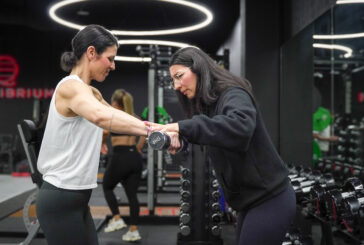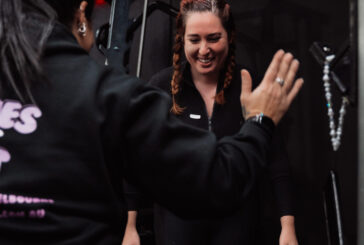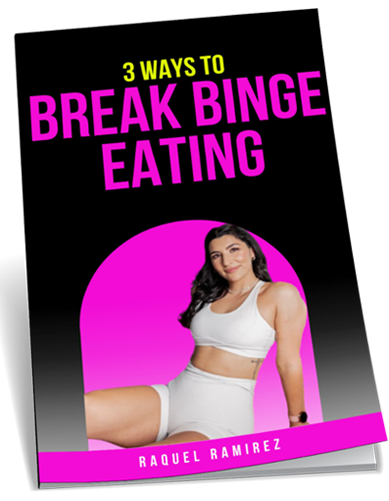If you’ve ever found yourself inspired by strong, confident women lifting heavy weights and wondered, “Could I do that?”—the answer is yes. Welcome to the world of powerlifting. It’s not just about brute strength or competition; it’s about personal empowerment, mental resilience, and celebrating what your body can achieve, not to mention, the amazing community of liek-minded people you will also meet. But what is powerlifting, exactly? And more importantly, how can women get started in a sport that’s historically been seen as male-dominated?
This guide offers a supportive and non-intimidating introduction to powerlifting—perfect for women curious about strength training, looking for a new challenge, or considering stepping onto a competition platform for the first time. And if you’re looking for a community that welcomes and empowers women in the sport, Ladies That Lift is a fantastic place to start.
What is Powerlifting?
At its core, powerlifting is a strength sport focused on three primary lifts:
- Squat
- Bench Press
- Deadlift
Each lift tests different aspects of strength and form. In competitions, lifters get three attempts at each lift, and their highest successful lifts are added together for a total score. While that sounds competitive, many women discover that powerlifting is as much a personal journey as it is a sport—about improving yourself, not just beating others.
Unlike bodybuilding, powerlifting is not about aesthetics. The goal isn’t how you look, but how strong you are. That’s why it appeals to so many women: it flips traditional narratives and puts performance at the center.
Why Powerlifting Is Perfect for Women
Despite outdated stereotypes, lifting heavy isn’t “too masculine” or dangerous for women. In fact, the benefits of powerlifting for females are backed by science and thousands of success stories.
Physical Benefits:
- Increased muscle mass and bone density
- Fat loss through increased metabolism
- Improved posture and core strength
- Better mobility and joint health
Mental Benefits:
- Boosted confidence and body image
- Stress relief and mental clarity
- A powerful sense of achievement
- Supportive community dynamics
Whether you’re training for competition or just to feel strong, the psychological transformation is often even more powerful than the physical one.
Female Powerlifting Introduction: How to Start
Feeling intimidated is normal at the beginning, but the learning curve is gentler than you think. Here’s how to get started with female powerlifting in a way that feels empowering and approachable.
1. Learn the Big Three Lifts
Each powerlift has its own technique, which takes time to master:
- Squat: Focuses on hips, thighs, glutes, and core.
- Bench Press: Builds upper body strength—pecs, shoulders, triceps and not to neglect the opposing muscles, like the back muscles.
- Deadlift: Strengthens the posterior chain—glutes, hamstrings, back.
Start light and focus on form first, not weight. Good form is your foundation for progress and injury prevention.
2. Get Coached by Experts Who Understand Strength Training for Women
Finding the right coach makes all the difference, especially when it comes to lifts like squats, bench press, and deadlifts. Not every trainer has the experience to teach these properly — and that’s exactly what we specialise in at LTL. Our team understands the unique needs of women in strength sports, and we coach everyone from first timers to competition-ready athletes.
Want to see what we do? Check out our Powerlifting page or head to our Instagram to see highlights from our recent Deadlifting Party — a fun, inclusive event for our whole community, not just our powerlifters.
3. Start With a Simple Program
There’s no need to dive into elite routines. Linear progression programs like Starting Strength or 5×5 are excellent for beginners. They let you gradually build strength while learning proper technique.
What Powerlifting Gear Do Women Need?
Unlike general fitness training, powerlifting eventually requires some specific gear. But you don’t need to buy everything at once. Here’s a breakdown of powerlifting gear for women and when you’ll likely need it.
Essentials for Beginners:
- Flat-soled shoes or lifting shoes (for squats and deadlifts)
- Weightlifting belt (helps with bracing during heavier lifts)
- Wrist wraps (for bench press stability)
- Knee sleeves (support and warmth for squats)
Optional for Competition:
- Singlet (mandatory for most powerlifting meets)
- Deadlift socks (protect shins from bar contact)
- Chalk (helps grip the bar, especially for deadlifts)
Invest in gear gradually. Many women start with just shoes and a belt and add more as they progress.
Powerlifting Meet Prep: Your First Competition
Curious about taking your training to the platform? A powerlifting meet is a fantastic way to challenge yourself and join a community of strong women. Preparing for your first competition doesn’t have to be overwhelming.
Key Phases of Powerlifting Meet Prep:
- Build a Solid Base: Spend 3–4 months improving your lifts and technique.
- Pick a Meet:Find a local or female-focused event with supportive judging and community. You can enter alone, but having a coach with you throughout the process can really ease the pressure many solo athletes later say they’d prefer that support next time.
- Learn the Rules: Each federation has different commands and gear requirements.
- Practice the Commands: Like “squat,” “rack,” or “press”—practice these during training.
- Taper and Rest: Reduce volume 1–2 weeks before the meet to feel fresh.
The goal isn’t to break records. It’s to give your best, enjoy the experience, and walk away stronger than when you started. Many first-time lifters say their meet experience was transformative and uplifting—especially when surrounded by encouraging women in the sport.
How to Powerlift as a Woman: Pro Tips
Starting anything new can feel daunting. Here are some tried-and-tested tips to help you ease into powerlifting with confidence:
- Find a coach or mentor: Whether in-person or online, guidance accelerates your learning.
- Track your progress: Use apps or a notebook to log lifts, notes, and milestones.
- Focus on yourself: Avoid comparing your numbers to others, especially at the beginning.
- Be consistent: Lifting is a long-term game—consistency beats intensity.
- Fuel your body: Strength training demands proper nutrition and recovery. Eat enough to support your growth.
And don’t worry if you’re the only woman in the gym—your presence is part of changing the game for the next woman who walks in.
Where to Find Support
Supportive spaces matter. Whether you’re starting from zero or looking to prep for your first meet, having a team in your corner is invaluable. Communities like Ladies That Lift offer coaching, training programs, and encouragement from women who’ve been in your shoes.
Connect with the Ladies That Lift team through us contact page to start your strength journey with expert support.
Final Thoughts
So, what is powerlifting for women? It’s strength, resilience, community, and empowerment—wrapped into one sport. You don’t need to be an athlete, a gym rat, or even “strong” to begin. You just need to start.
Powerlifting is not about becoming someone else—it’s about discovering the strongest version of yourself. And whether your goal is to compete or simply feel more powerful in your daily life, you’ll be amazed at what you’re capable of.
When you’re ready to take the next step, Ladies That Lift is here to support you—because strength is for every woman.
FAQs:
Powerlifting is a sport focused on maximizing strength in three specific lifts: the squat, bench press, and deadlift. Unlike general strength training, it has structured goals and competitions based on total weight lifted.
Yes! With proper technique and progression, powerlifting is a safe and empowering way to build strength. In fact, it improves joint health, bone density, and posture.
Not at all. Powerlifting builds strength. You begin with manageable weights and progress gradually—there’s no minimum strength needed to start.
Start with basics like flat shoes and maybe a belt. You can add wrist wraps, knee sleeves, and other gear as you advance.
Train consistently, learn the meet rules, practice commands, and taper your training before the event. Most importantly, go in with the goal to have fun and learn.





